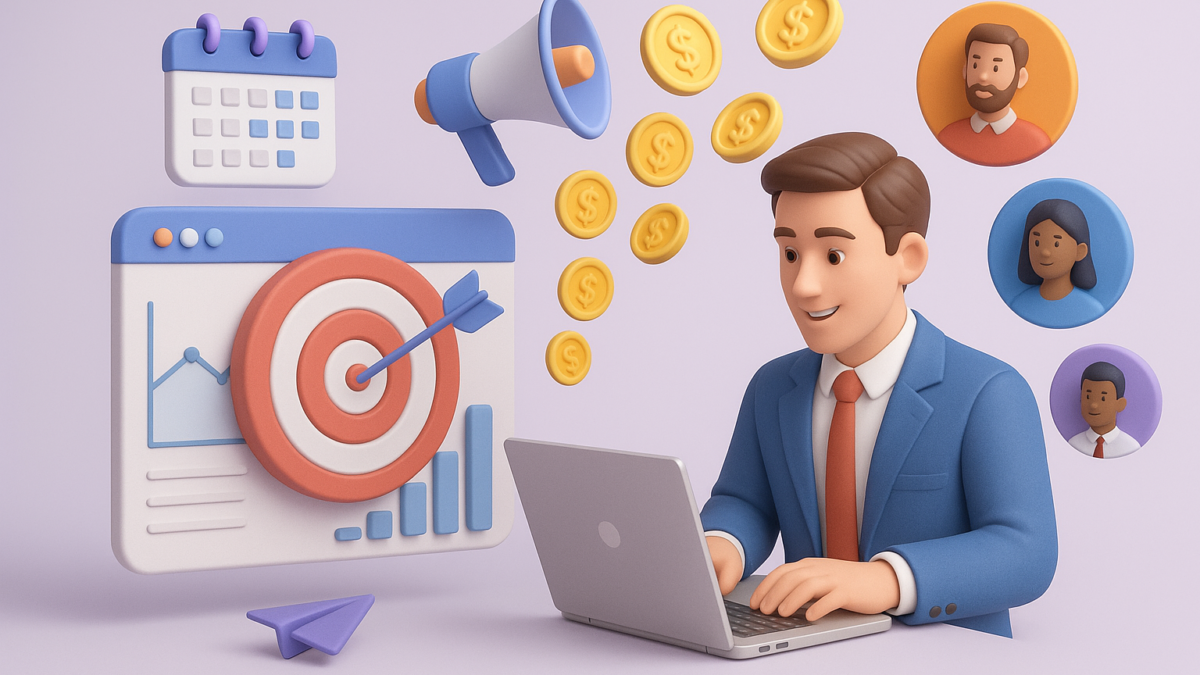Lead Generation in 2025: Proven Strategies to Drive High-Quality B2B Leads
In today’s hyper-competitive digital landscape, lead generation is more than just capturing contact details — it’s about attracting the right prospects, nurturing relationships, and converting them into loyal customers. As marketing automation, AI, and data analytics evolve, the art of lead generation has become more strategic, personalized, and measurable than ever before.
If you’re looking to sharpen your B2B lead generation strategy in 2025, this guide walks you through actionable insights, effective techniques, and emerging trends to help you attract quality over quantity.
What Is Lead Generation and Why Does It Matter?
Lead generation is the process of identifying, attracting, and converting potential customers (leads) who have expressed interest in your business’s products or services.
For B2B marketers, it’s the lifeline of the sales pipeline — ensuring consistent business growth. Without a steady influx of qualified leads, even the best sales teams struggle to meet targets.
Key Goals of Lead Generation:
- Build awareness among the target audience
- Capture intent-driven prospects
- Nurture relationships through content and engagement
- Convert prospects into paying customers
According to a HubSpot 2025 report, 61% of marketers list lead generation as their top challenge — but also their greatest opportunity for long-term ROI.
The Lead Generation Funnel Explained
To build a sustainable lead generation strategy, businesses must understand the three critical stages of the funnel:
1. Top of the Funnel (TOFU) – Awareness
At this stage, prospects are discovering your brand. The focus should be on content marketing — blogs, social media posts, and videos that educate and attract.
Tactics:
- SEO-optimized blog posts
- Free whitepapers or industry reports
- Webinars and podcasts
2. Middle of the Funnel (MOFU) – Consideration
Here, leads are evaluating their options. The goal is to build trust and nurture them with targeted content.
Tactics:
- Email marketing campaigns
- Case studies and testimonials
- Interactive tools or ROI calculators
3. Bottom of the Funnel (BOFU) – Conversion
This is where your qualified leads are ready to make a decision.
Tactics:
- Free demos or trials
- Personalized offers or consultations
- Clear CTAs on landing pages
Top Lead Generation Strategies for 2025
1. Leverage AI-Powered Personalization
Artificial Intelligence (AI) allows marketers to deliver hyper-personalized experiences based on user intent and behavior. From chatbots that engage visitors to predictive lead scoring, AI ensures your sales team focuses on ready-to-convert prospects.
Example:
AI-driven CRMs like HubSpot and Aalign.io automate lead nurturing workflows, improving conversion rates by up to 35%.
2. Optimize Content for Intent-Based Search
In 2025, SEO is no longer about keywords — it’s about intent. Optimize your content for long-tail queries that align with what your audience actually searches for.
Pro Tip:
Use blog titles like “How to Generate B2B Leads Using LinkedIn” or “Best CRM Tools for Lead Nurturing in 2025” to capture high-intent traffic.
3. Invest in B2B Content Syndication
Content syndication distributes your high-value content — such as eBooks, webinars, and whitepapers — across trusted platforms to reach new, qualified audiences.
This method not only boosts brand visibility but also delivers marketing-qualified leads (MQLs) directly to your sales funnel.
4. Use LinkedIn for B2B Lead Generation
LinkedIn remains the go-to platform for B2B marketers. With advanced targeting tools, you can reach decision-makers by job title, company size, and industry.
Best Practices:
- Publish thought leadership articles weekly
- Run LinkedIn Lead Gen Ads
- Engage with comments to boost organic visibility
According to LinkedIn data, 80% of B2B leads come from the platform — proving its unmatched effectiveness.
5. Nurture Leads with Email Automation
Email remains a powerful lead-nurturing tool when used strategically. Automated drip campaigns allow you to guide prospects through the funnel with relevant, value-driven content.
Example Workflow:
- Welcome email → 2. Case study → 3. Demo invitation → 4. Limited-time offer
Tools to Try: Mailchimp, ActiveCampaign, or HubSpot Workflows
6. Measure, Analyze, and Optimize
You can’t improve what you don’t measure. Track your lead generation performance using key metrics such as:
- Cost per lead (CPL)
- Lead-to-customer conversion rate
- Average deal size
- Customer Lifetime Value (CLV)
Using analytics dashboards helps identify which campaigns drive the most qualified leads — enabling data-driven decisions.
Emerging Trends in Lead Generation
1. Voice Search Optimization
With AI assistants like Siri, Alexa, and Google Assistant driving 50% of searches, optimizing your content for voice queries is crucial. Focus on conversational keywords and FAQ-style content.
2. Account-Based Marketing (ABM)
ABM combines sales and marketing efforts to target specific high-value accounts. Instead of chasing hundreds of leads, focus on the few that matter most.
3. Video and Interactive Content
Videos, polls, and quizzes drive higher engagement. According to Wyzowl, 88% of marketers say video content provides positive ROI in lead generation campaigns.
Conclusion: Lead Generation Is Evolving—Are You?
Lead generation in 2025 is all about precision, personalization, and performance. From AI-driven tools to intent-based strategies, success lies in understanding your audience and crafting experiences that resonate at every stage of the buyer journey.
If you’re ready to scale your B2B pipeline with data-driven, automation-first lead generation strategies, partner with iTMunch today.
Let’s grow your leads smarter.
Explore our B2B Lead Generation Services
You May Also Like: What Is Whitepaper Syndication? A Complete Guide for B2B Marketers in 2025





